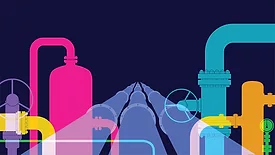Home » plumbing engineers
Articles Tagged with ''plumbing engineers''
Professional Plumbing Engineer Viewpoints | James Dipping
The industry needs to adopt more modern domestic water pipe sizing practices.
Read More
Strategic Plumbing Insights | Christoph Lohr
The plumbing industry survey we need
It’s time plumbing engineering was recognized as an essential, specialized field.
November 19, 2024
PM Engineer names Scott Steindler 2024 Plumbing Engineer of the Year
Steindler's unrivaled dedication to learning and passion for the plumbing industry shines through to everyone he meets.
October 16, 2024
Plumbing Talking Points | David Dexter
Gaseous regulators, what are they?
How a regulator works to control flow.
October 14, 2024
Guest Editorial | David Beal
Applying the Water Demand Calculator: Public fixtures in multi-family buildings
Calculating flow rates can be tricky.
September 16, 2024
Plumbing Essentials — Design Approaches, Codes and Everything in Between | Lowell Manalo
HCAI’s PIN’s and CAN’s — beneficial or not?
Assisting engineers with design decision-making.
September 11, 2024
Plumbing Essentials — Design Approaches, Codes and Everything in Between | Lowell Manalo
Water hammer arrestor — simply install one and be done with it
Design considerations to avoid potential pitfalls.
August 7, 2024
Strategic Plumbing Insights | Christoph Lohr
Witnessing an Energy Water Nexus
LADWP La Kretz Innovation Center, ASPE LA Chapter and IAPMO’s Water Demand Calculator in California.
August 6, 2024
Keep your content unclogged with our newsletters!
Stay in the know on the latest plumbing & piping industry trends.
JOIN TODAY!Copyright ©2025. All Rights Reserved BNP Media.
Design, CMS, Hosting & Web Development :: ePublishing
















